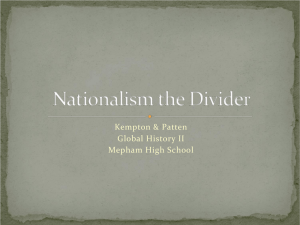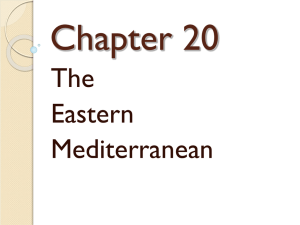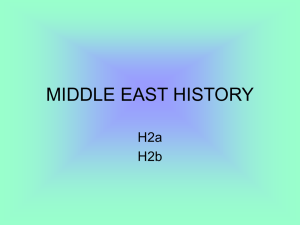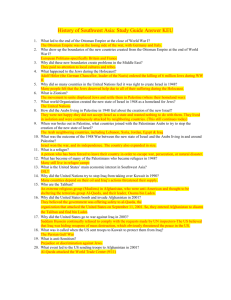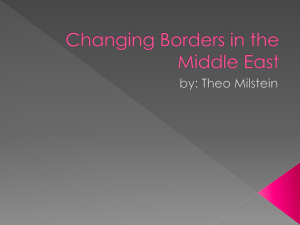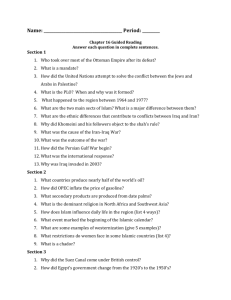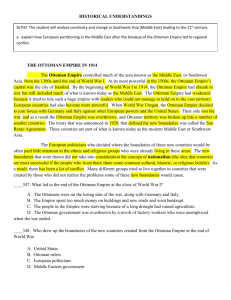Possible quiz or review for SS7H2a,b,c
advertisement
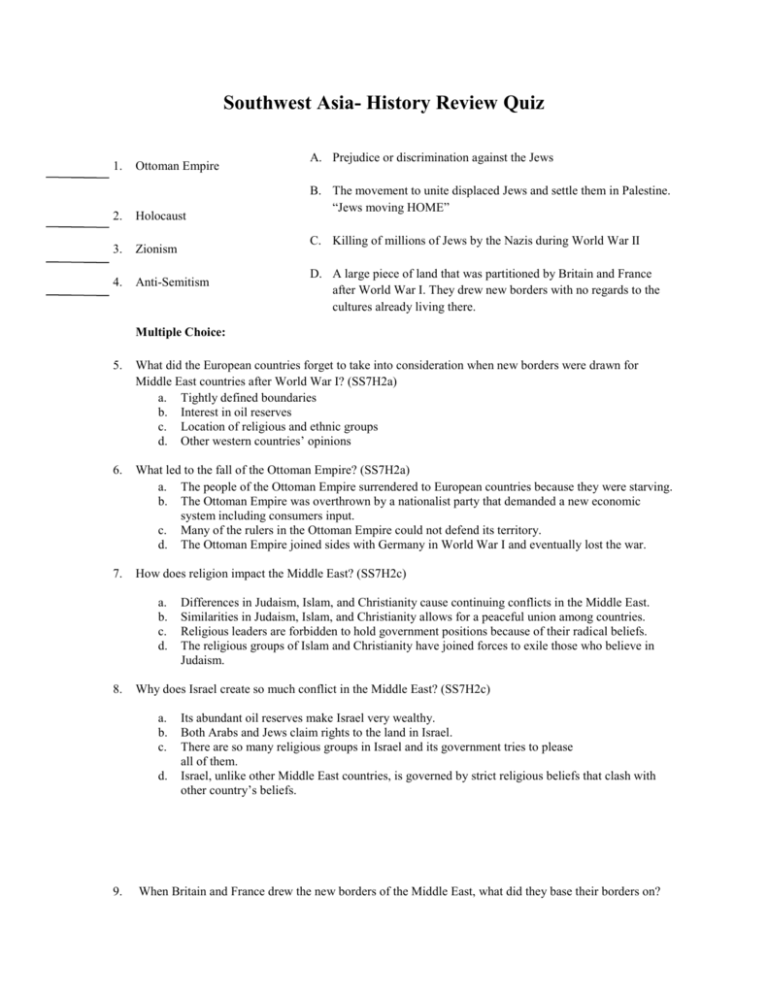
Southwest Asia- History Review Quiz 1. Ottoman Empire 2. Holocaust 3. Zionism 4. Anti-Semitism A. Prejudice or discrimination against the Jews B. The movement to unite displaced Jews and settle them in Palestine. “Jews moving HOME” C. Killing of millions of Jews by the Nazis during World War II D. A large piece of land that was partitioned by Britain and France after World War I. They drew new borders with no regards to the cultures already living there. Multiple Choice: 5. What did the European countries forget to take into consideration when new borders were drawn for Middle East countries after World War I? (SS7H2a) a. Tightly defined boundaries b. Interest in oil reserves c. Location of religious and ethnic groups d. Other western countries’ opinions 6. What led to the fall of the Ottoman Empire? (SS7H2a) a. The people of the Ottoman Empire surrendered to European countries because they were starving. b. The Ottoman Empire was overthrown by a nationalist party that demanded a new economic system including consumers input. c. Many of the rulers in the Ottoman Empire could not defend its territory. d. The Ottoman Empire joined sides with Germany in World War I and eventually lost the war. 7. How does religion impact the Middle East? (SS7H2c) a. b. c. d. 8. Why does Israel create so much conflict in the Middle East? (SS7H2c) a. b. c. d. 9. Differences in Judaism, Islam, and Christianity cause continuing conflicts in the Middle East. Similarities in Judaism, Islam, and Christianity allows for a peaceful union among countries. Religious leaders are forbidden to hold government positions because of their radical beliefs. The religious groups of Islam and Christianity have joined forces to exile those who believe in Judaism. Its abundant oil reserves make Israel very wealthy. Both Arabs and Jews claim rights to the land in Israel. There are so many religious groups in Israel and its government tries to please all of them. Israel, unlike other Middle East countries, is governed by strict religious beliefs that clash with other country’s beliefs. When Britain and France drew the new borders of the Middle East, what did they base their borders on? a. b. c. d. Where religions were located Where ethnic groups were located Where the most oil was located Where the most desert was located 10. What was the result of the European Partitioning of the Ottoman Empire? a. All ethnic and religious groups were happy with the way the Ottoman Empire was divided b. It caused conflicts between religious and ethnic groups c. Britain and France were able to obtain land for diamonds d. Many Europeans immigrated to the Middle East. 11. What two countries partitioned the Ottoman Empire? a. Britain and France b. Britain and Spain c. France and Spain d. France and Germany 12. Why were Britain and France interested in the land in the Middle East? a. It’s abundance of oil b. It’s abundance of water c. It’s abundance of desert d. It’s religious and ethnic groups 13. What do Anti-Semitism, Zionism, and the Holocaust have in common? a. They all led to the creation of Modern day Israel for the Jewish people. b. They all led to World War 2. c. They all happened prior to World War 1. d. They do not have anything in common. 14. How would political maps of the Middle East in 1945 and 1950 be different? a. The modern day nation of Israel would not exist on the older map. b. The modern day nation of Israel would exist on both maps. c. The modern day nation of Israel would not exist on both maps. d. They would both look exactly the same. 15. How did the Holocaust lead to the establishment of modern day Israel? a. Displaced Jews wished to return to Palestine, and the U.N. voted to support their desires to return to their homeland. b. People around the world felt that Jews would be best served by assimilating into the United States. c. Displaced Jews did not wish to return to their homeland. d. There were no Jews remaining after the Holocaust.


